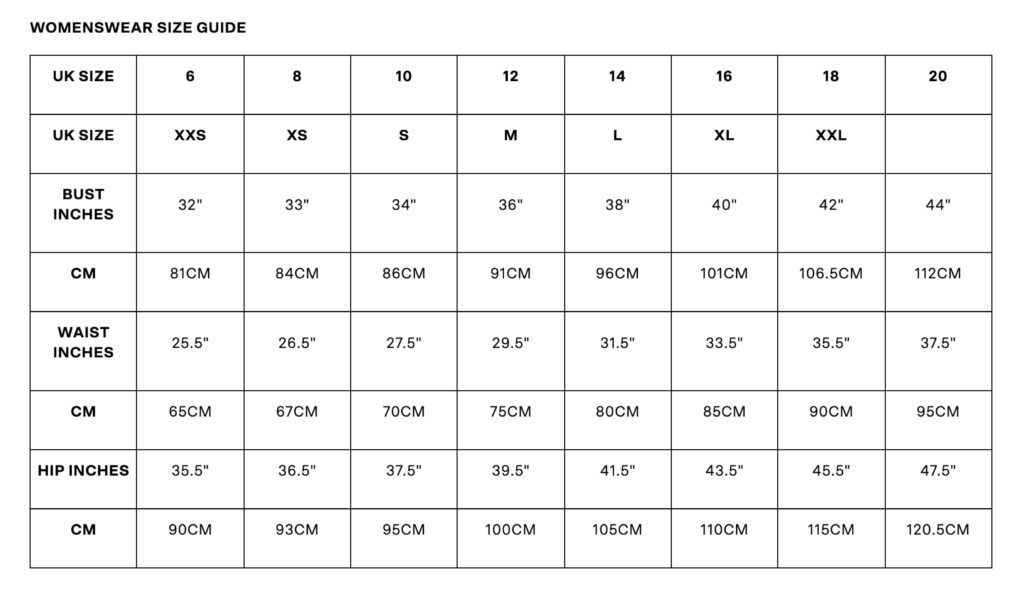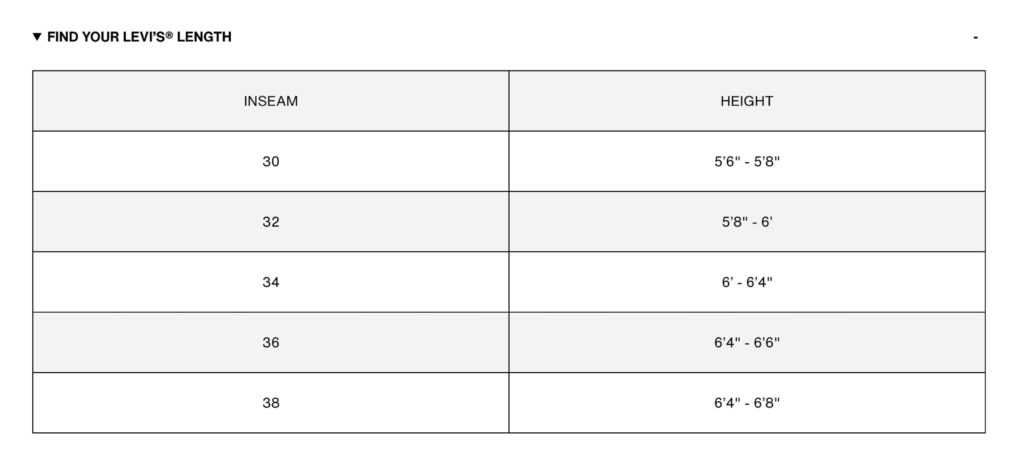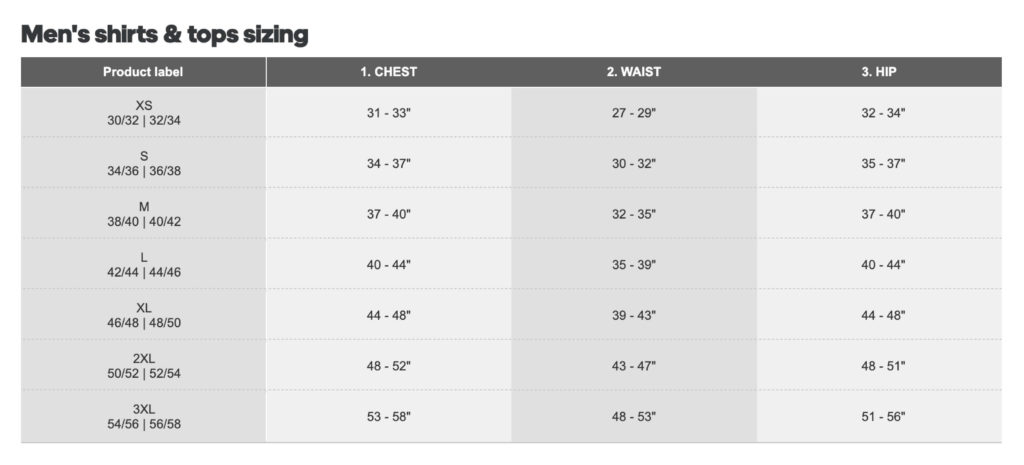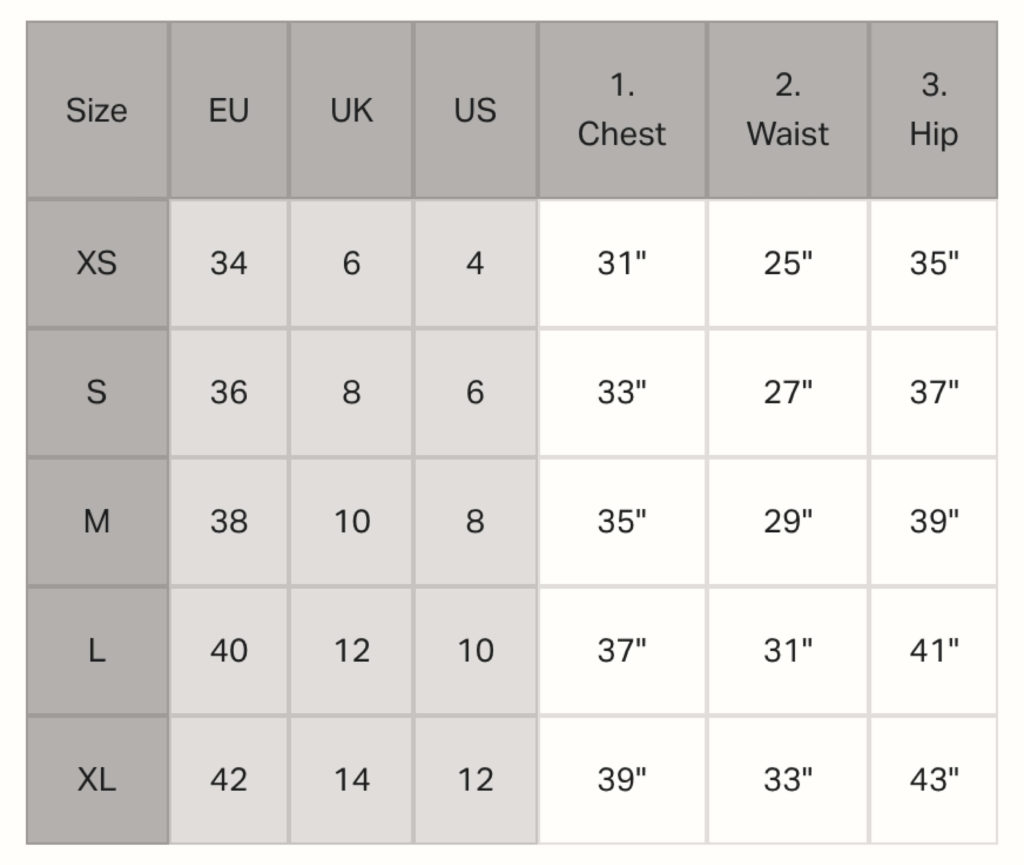How to Use a Size Chart Effectively for Perfect Clothing Fit
It can be difficult to find clothes in the right size for many people. Even if you find a size that fits, it can be hard to tell if the clothing will look good on you. Because of these factors, many people buy clothes that are either too big or too small and then they end up with items that don’t fit well or aren’t stylish. Luckily, there are ways to avoid this from happening. By using online sizing charts, you can determine what sizes work best for your body type without having to go into a store and try them on.
Chart your fashion flair with a closet audit!
Choosing the right size for every occasion is no longer a guessing game.
Why Size Charts Matter
It’s important to understand how size charts work if you’re purchasing clothes from brands that use them, even if it seems like an unnecessary step or just one more thing to worry about. Clothing size charts are based on each brand’s technical design and grading. Different brands use different size charts. One brand’s size 2 may be significantly smaller than another brand’s. Therefore, when shopping for clothes, it is crucial to compare size charts.

Being able to refer to them quickly when shopping for clothes is key to finding products made to fit. Size charts give you a general idea of how the product is constructed. You can, for example, find size charts that describe the type of clothes for petite, big and tall, or athletic people.
This gives you a good idea of what brands will work for you. If, for instance, you are petite, you will probably find that Free People clothing fits your body type well.
What To Look For When Reading A Size Chart
Learning how to read a size chart can be difficult at first because there are so many different types of size charts out there. After familiarizing yourself with the most common ones, you will be able to understand how they work quickly and easily.
By checking the measurements on a size chart against your own measurements, you can determine your correct size. In this way, you can narrow down what sizes work for you without having to rely on the manufacturer’s sizing information. Size charts usually include the following information:

Size Guide: shows which sizes are available for this item. Sizes include S, M, L, XL, XXL, 2, 4, 6, etc. Choose the letters and numbers that work for you. Examine the size chart carefully to ensure the sizing for your neck, bust, and waist matches your own measurements.
Fit: refers to how tight or lose an item is, and it can range from very tight to oversize. Size is not the same as fit. Make sure you compare your measurements and adjust for comfort if you need more or less space.
Style: refers to how the measurements are distributed on the body. There are three main types of styles:
- Body block style has all measurements starting from the same point and then going out in straight lines. This style is used for patterns that fit close to the body, such as swimsuits and lingerie.
- Bust dart style starts with all the measurements at the bust and then goes out in curves. This style is used for blouses, shirts, dresses, and jackets.
- Princess seam style has diagonal lines that go from under the arm down to the waist or below. This style is used for skirts, dresses, and gowns.
Length: is the measurement from the top of the shoulder to the bottom of the garment.

When clothing manufacturers do not specify which measurement system they are using, you can easily determine what size would be appropriate for your body type by measuring yourself with a tape measure.
How To Read A Size Chart Based On Your Body Measurement
The first step is to measure your body. By measuring yourself and comparing the results with the size chart, you can determine your size. There are usually a number of sizes available for that particular style of clothing in the size chart. If your measurements fall between two sizes, for example, 30″ and 32″, you should choose the larger size.
The majority of clothing brands offer sizes for bust, waist, and hips. Knowing what measurements correspond to each size will help you find clothes that fit correctly. When shopping for a dress, skirt, or jeans, most brands use your waist and hips to determine your size. The inseam length of the pants is also important to note, this is how long the pants are from the crotch to the hemline.
Other sizes, like arm length, shoulders, and height, are sometimes included in sizing charts, depending on the brand. It is also important to understand what measurements are being used by your favorite brands. Use a similar item as a reference point when you try on clothes if there is no size chart with an item.
Above all, remember that different clothes fit differently and a style that worked for one person may not work for you. Some brands cater to plus-size individuals, while others accommodate big and tall individuals. It is important to know your body type and read clothing size charts accordingly to feel comfortable at all times.
The next step is to examine a clothing size chart once you’ve determined your body measurements. You should err on the side of caution and buy a slightly larger garment if you are uncertain of your measurements. There are many sizing charts online that act as guides for what types of clothes fit certain body types.
How To Choose The Right Size Based On Your Measurements
As a general rule, try to ignore the letters S, M, L (Small, Medium, Large) and 2, 4, 6. It’s best to familiarize yourself with your measurements so you can find clothes that fit your body type. Labels like these are not accurate or correct to determine the right size, as they are only size guides. To get the best fit, you need to use your measurements when choosing clothes.

Choosing the right size for your body type can be difficult if you’re not used to shopping for clothes. The good news is that there are several resources that can help you find the best fit.
Generally, if…
- you weigh more than 50kg/110 lbs and your waist measurements are 32 inches around or less, go for a size S.
- your waist measurements are 33 inches or more, go for a size M.
- you weigh between 50-58 kg/110-130 lbs, choose a size L.
- you weigh more than 58kg / 130lbs and your waist is 32 inches around or less, it’s a good idea to look for clothes marked Fitted, which are smaller than your regular size (usually by 2 sizes).
However, if your stomach is bigger than 32 inches around, or if you wear overcoats in wintertime which make your body seem bigger even though they are not too tight; try getting clothes marked as Regular fit instead (roomier), meaning the clothes should be approximately one size bigger than your usual size.
You should choose clothes with the label Long rather than Regular if you have very long arms, as this will ensure that your clothes fit properly and won’t ride up or leave a gap between you and your shirt sleeves.
Following these simple guidelines will help you choose the right measurements for different types of clothing such as coats, blouses, etc.
The Importance Of Using A Size Chart When Buying Clothes
It is important to use a size chart for two reasons: it allows people to find the perfect fit and feel confident in what they’re wearing, and it makes clothing more accessible to people of all shapes and sizes.
A size chart can help you if your weight fluctuates from time to time. If your weight changes dramatically due to illness or strenuous exercise, you may not know what size you need. If this happens, measure yourself and refer to a size chart.
For plus-sized individuals and those who require special clothing accommodations, size charts are particularly useful. Nearly 70 percent of American women are size 14 or larger, according to market research firm Plunkett Research, but many stores do not carry clothing for these individuals. Size charts make it easy for customers to find what they need.

Tips And Tricks For Finding The Right Size
The following tips will make your process easier: first, pay attention to the sizing information on the tag or inside the collar when purchasing clothing. Remember that sizing charts are just guidelines, and you always have the right to purchase clothing in any size you feel comfortable in.
Tips 1: Finding the right size can be challenging, but there are many tools and resources available to help. Size Wise, a personal sizing recommendation platform, is among the most helpful. Shoppers can connect directly with brands using their body measurements to find clothing in the right size.
Tip 2: If you aren’t sure about your measurements, you can find out easily. You can watch tutorials on YouTube or consult a tailor or seamstress. They will be able to accurately take your measurements.
Tip 3: It’s best to go with what feels right for you rather than by the size on the tag. Sizes differ between brands, so they may be off by a couple of inches here and there. Use Size Wise tools to determine your accurate size before making any purchases while shopping online.
Knowing your size is important if you are going to buy clothes online. Before you shop, you should measure your body and find the corresponding measurements for each area on a size chart. It will ensure that your clothes fit well and are comfortable. Although it can be difficult to figure out what size clothing will fit you best, these tips will make it easier than ever to shop from home. Create an account to use our tools and services to find the most suitable fit.
Frequently Asked Questions on Size Charts
What is a size chart?
A size chart shows the relationship between different sizes and their related measurements. Such charts are often used for clothing or other products. You can use them to determine what size fits your body type the best.
How do size chart work?
Size charts guide you to the perfect fit. Measure key areas like chest, waist, hips, and compare with the chart. Choose the larger size if in-between. Remember, sizing varies by brand and style. At Size Wise™️ Closet Coach, we help you find the right sizes for your unique shape, boosting confidence and comfort.
How do you measure yourself for a sizing chart?
Measuring for a sizing chart? Easy! Use a tape measure, keep it snug, not tight. For ideal fit. This ensures your clothes reflects your unique style and shape.
How do you read clothing size guide?
To read a clothing size guide: Measure your bust, waist, and hips. Match these to the guide’s size chart. Choose a larger size if you’re between sizes. Remember, fit varies by brand.
How do size charts differ between inches and centimeters?
Sizing is done in inches in the United States, which can be translated into centimeters. One inch is generally 2.54 centimeters. You should be aware of the measurements and how they correspond with the size chart when purchasing from a company in another country.
Why do sizing charts vary by country?
Because of cultural differences and legislation, sizes can differ greatly between countries. The UK’s sizing system differs from that of the US, for instance. Japan and Australia both use their own system of measuring clothing. In most cases, the size charts provided on each brand’s website will reflect the sizes that are common in that country



